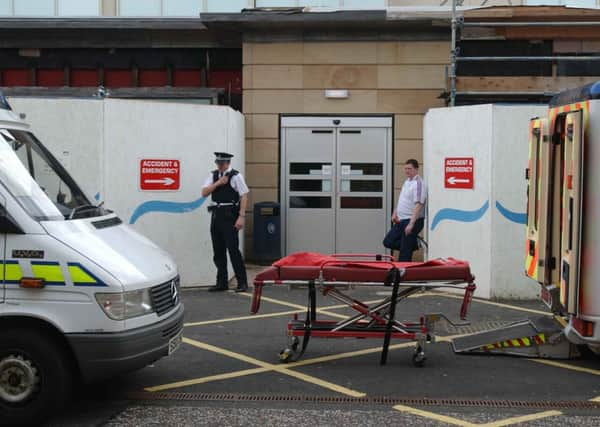Bid to cut number of patients wrongly visiting A&E


It is estimated that about 16 per cent of people visiting A&E do not need to be there and some hospitals are already signposting such patients to other services, such as out-of-hours GPs and NHS 24.
Now units across Scotland will adopt the practice, under new non-emergency care guidance to direct patients to the most appropriate service after a consultation with a senior clinician.
Advertisement
Hide AdAdvertisement
Hide AdThe Scottish Government said this would help A&E departments focus on patients with emergency care needs and reduce the amount of time they have to wait to receive treatment.
NHS Tayside has operated a system of directing patients to other services for a number of years.
Patients are initially assessed by a senior clinician and if their injury or illness does not require emergency treatment they be sent on to the most appropriate place for treatment, such as their GP, NHS 24 or out-of-hours clinic.
The Tayside system used at Ninewells in Dundee and Perth Royal Infirmary sees about 4,000 of their 80,000 A&E patients signposted to other services each year.
The board has performed well in A&E targets, with 99.2 per cent of patients seen within four hours last December.
The Scottish Government said examples where patients could be referred to other services included those where people were seeking treatment for ingrown toenails, toothache or earache.
Health Secretary Alex Neil said: “This new guidance will make sure that all patients are getting the right treatment, in the right place and by the right clinicians.
“That not only helps the NHS meet demands, but it is better for patients as they get treated quicker.
Advertisement
Hide AdAdvertisement
Hide Ad“Our A&E departments provide a remarkable service, and day in day out they ensure those patients who have the most imminent need get access to the fastest possible treatment.
“This winter we’ve seen an improvement in A&E performance, supported by our £50 million unscheduled care action. But we want performance to continue to improve, which is why this new guidance is so important.”
Lesley McLay. NHS Tayside chief executive, added: “This system has helped NHS Tayside consistently meet and exceed A&E waiting times targets and become of one of the best performing mainland boards in Scotland.
“Members of the public have always recognised that A&E is for those with genuine emergencies, however they are not always aware of what alternatives are out there.
“By having a senior clinician assess and redirect patients as necessary we can ensure that everyone receives the appropriate treatment.”